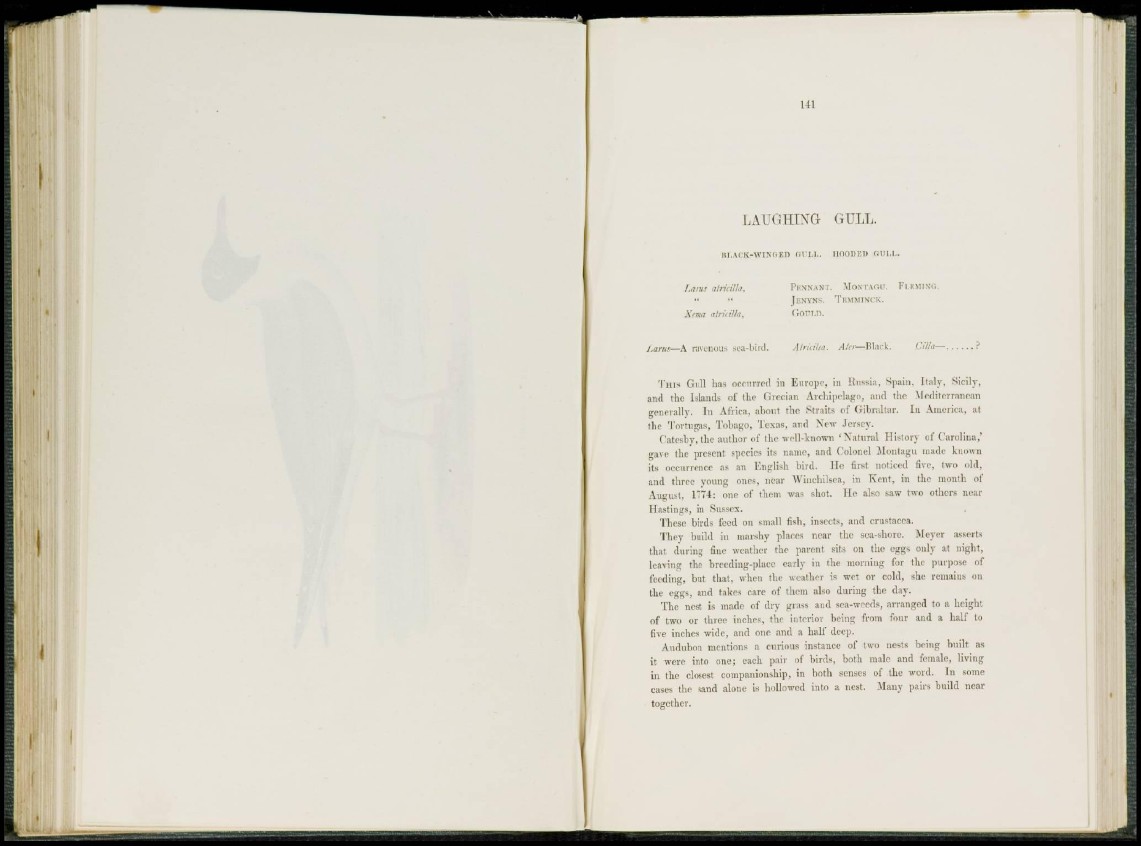
L A U G H I N G G U L L.
BLACK-WINGED GULL. HOODED CULL.
Larus atrmfh, PRNNAN r. MONTAGU. FLEMING.
" " JENYNS. TRMMINCK.
Xema alrkilla, (\ov\.v>.
J,arus—A ravenous sea-bird. Atrkilia. Ater—Black. Cilia— ?
T H I S Gull lias occurred in Europe, in Russia. Spain, Italy, Sicily,
and the Islands of* the Grecian Archipelago, and the Mediterranean
generally. In Africa, about the Sir;iits of Gibraltar. In America, at
the Tortugas, Tobago, Texas, and New Jersey.
Catesby, the author of the well-known 'Natural History of Carolina,'
gave the present species its name, and Colonel Montagu made known
its occurrence as an English bird. He first noticed five, two old,
and three young ones, near Wincliilsea, in Kent, in the month of
August, 1774: one of them was shot. He also saw two others near
I tastings, in Sussex.
These birds feed on small fish, insects, and C r u s t a c e a.
They build in marshy places near the sea-shore. Meyer asserts
that during fine weather the parent sits on the eggs only at night,
leaving the breeding-place early in the morning for the purpose of
feeding, but that, when the weather is wet or cold, she remains on
the eggs, and takes care of them also during the day.
The nest is made of dry grass and sea-wceds, arranged to a height
of two or three inches, the interior being from four and a half to
five inches wide, and one and a half dec]).
Audubon mentions a curious instance of two nests bring built as
it were into one; each pair of birds, both male and female, living
in the closest companionship, in both senses of the word. In some
cases the sand alone is hollowed into a nest. Many pairs build near
together.